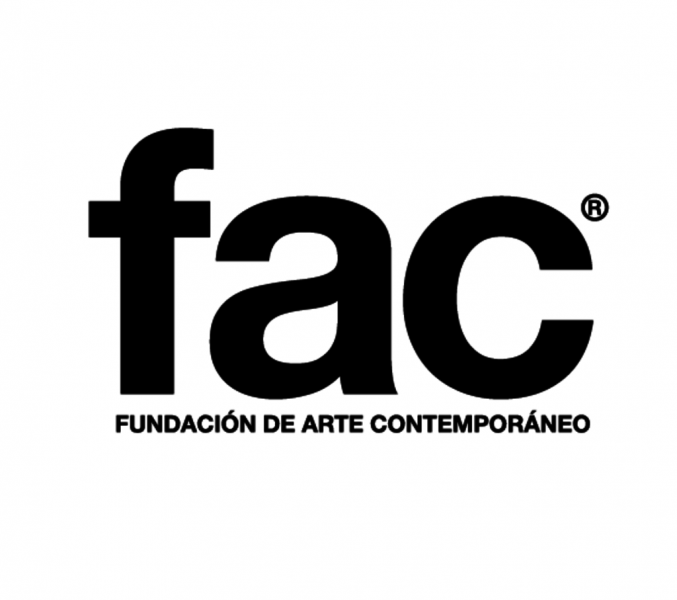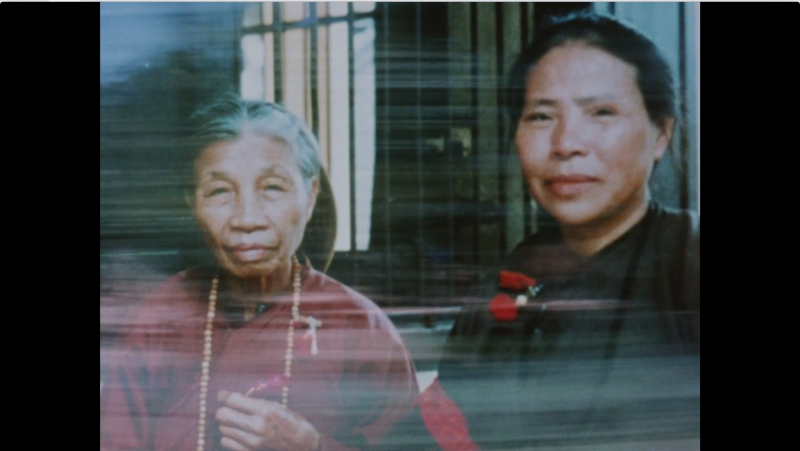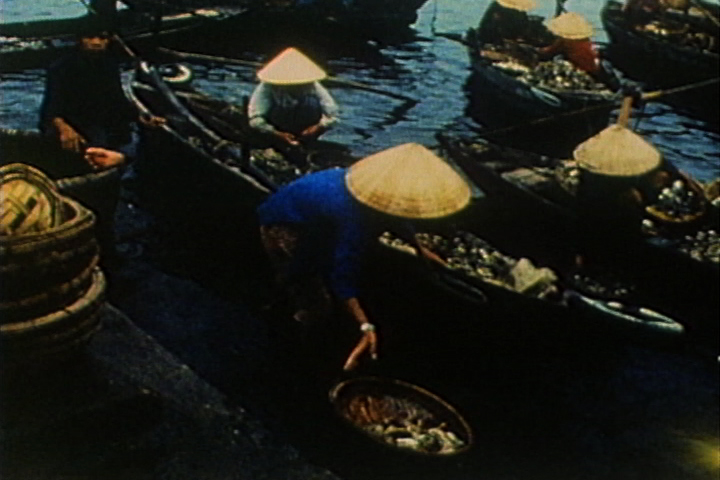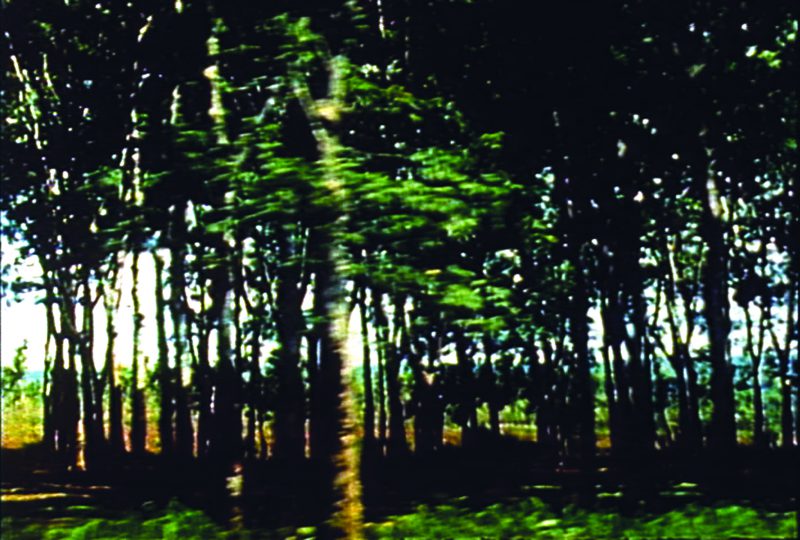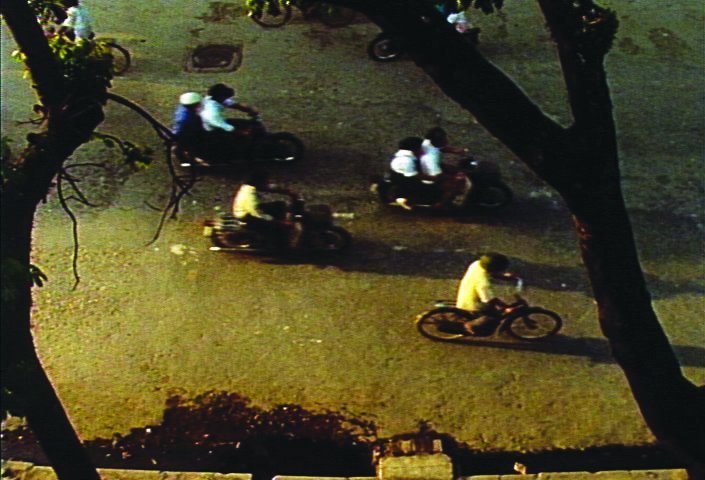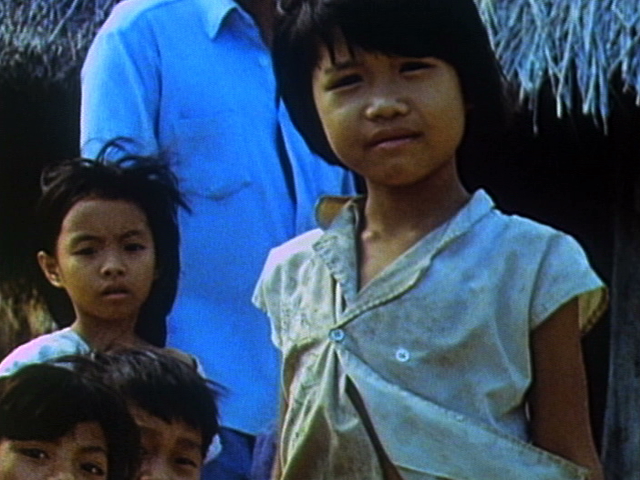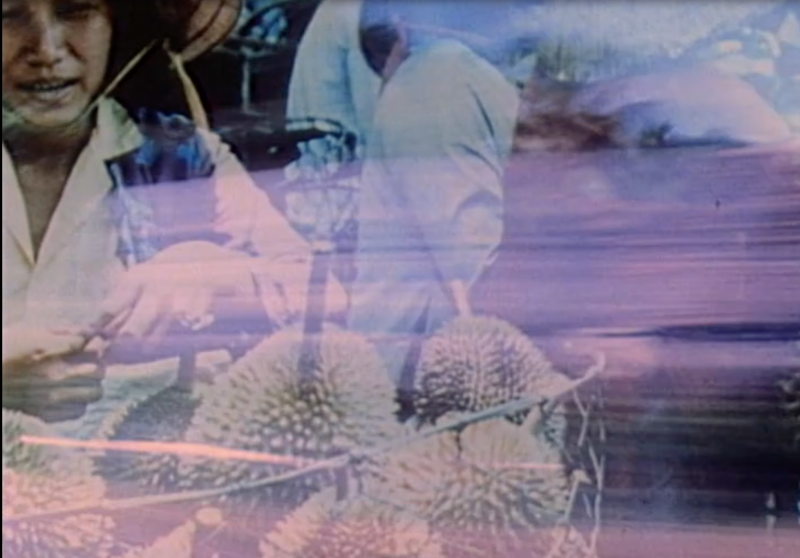Two directions in the creative process
by Lynne Sachs with a video interview by Kevin B. Lee
[Editor’s note: We publish this list and the accompanying video as part of the “Fifty Days, Fifty Lists” project. Read more at “Why Lists?”]
Can also be seen here: https://www.youtube.com/watch?v=u3aC0P5dDho
I feel a closeness with writers, poets and painters, much more than with traditional film “directors.” We share a love of collage. In the kinds of films I make, there are fissures in terms of how something leads to something else. Relationships and associations aren’t fixed. I always learn from an audience, about whether or not the convergence of two images is actually expressing an idea. I hope it’s doing one thing, but I might learn that it is doing something completely different. In this way the films are kind of porous; they are open to interpretation. One thing I realized recently is that I have this rhythm when I make films—ABABAB or yesnoyesnoyesno. For example, I call The House of Science a “yes film” because any idea that came into my head, pretty much made its way into the movie. The yes films are full of associations—some of them are resolved and some of them are adolescent; they’re still trying to figure out who they are. Other films are “no films.” Window Work is a single eight-minute image of me sitting in front of a window. It’s very spare and kind of performative. I felt like it had to be done in one shot. “No, you can’t bring in any clutter.” Sometimes I try to make films that don’t have clutter; other times I make films that are full of it.
Watch ‘Lynne Sachs’ Yes and No Films’ by Kevin B. Lee
Here is a list of my films in the Fandor collection. Critic Kevin B. Lee gave me the assignment to designate films that fall under the YES or NO category. Please keep in mind that these rather black-and-white distinctions do not imply a positive or negative disposition within the film. Instead, they indicate an integrated philosophical approach to the artistic rigor I brought to the creative process. I didn’t actually figure out that I was following this approach until about 2010, so I am actually imposing this nomenclature on my filmography retroactively.
Selected Films and Videos by Lynne Sachs
Still Life with Woman and Four Objects (4 min. B&W 16mm, 1986)
A film portrait that falls somewhere between a painting and a prose poem, a look at a woman’s daily routines and thoughts via an exploration of her as a “character.” By interweaving threads of history and fiction, the film is also a tribute to a real woman—Emma Goldman.
(This is a YES film that was inspired by my viewing of Jean-Luc Godard’s Vivre sa vie and Yvonne Rainer’s Lives of Performers. For the first time, absolutely any idea that came to my mind had to squeeze its way into my four-minute film. Sometimes big ideas were distilled into a gesture or a cut. So was born an experimental filmmaker. . . .)
Drawn and Quartered (4 min. color 16mm, 1986)
Optically printed images of a man and a woman fragmented by a film frame that is divided into four distinct sections. An experiment in form/content relationships that are peculiar to the medium.
(This is a NO film. I shot a film on a roof with my boyfriend. Every frame was choreographed. Both of us took off our clothing and let the Bolex whirl and that was it. Pure and simple.)
Following the Object to Its Logical Beginning (9 min. color 16mm. 1987)
Like an animal in one of Eadweard Muybridge’s scientific photo experiments, five undramatic moments in a man’s life are observed by a woman. A study in visual obsession and a twist on the notion of the “gaze.”
(Another YES film intended as a pair with Still Life with Woman and Four Objects. I tried to put way too many ideas into this film and it ultimately didn’t work very well. It was a risk, and that in and of itself I am happy about.)
Sermons and Sacred Pictures: the Life and Work of Reverend L.O. Taylor (29 minutes, 16mm, 1989)
An experimental documentary on Reverend L.O. Taylor, a Black Baptist minister from Memphis who was also an inspired filmmaker with an overwhelming interest in preserving the social and cultural fabric of his own community in the 1930s and 1940s.
(A teacher of mine in graduate school said to me “Why don’t you put yourself into the movie? Make yourself visible on the screen.” I felt that my fingerprint on the film and the three-year production expressed my personal presence far better than my actually being in the film. I said NO.)
The House of Science: a Museum of False Facts (30 min., 16mm 1991)
“Offering a new feminized film form, this piece explores both art and science’s representation of women, combining home movies, personal remembrances, staged scenes and found footage into an intricate visual and aural college. A girl’s sometimes difficult coming-of-age rituals are recast into a potent web for affirmation and growth.” — SF Cinematheque
(This film was the beginning of unbridled YES-ness.)
Which Way Is East: Notebooks from Vietnam (33 min., 16mm, 1994)
“A frog that sits at the bottom of a well thinks that the whole sky is only as big as the lid of a pot.” When two American sisters travel north from Ho Chi Minh City to Hanoi, conversations with Vietnamese strangers and friends reveal to them the flip side of a shared history. “The film has a combination of qualities: compassion, acute observational skills, an understanding of history’s scope, and a critical ability to discern what’s missing from the textbooks and TV news.” —Independent Film & Video Monthly
(I shot this film during a one-month visit to Vietnam. I traveled around the country with my sister and shot only forty minutes of film, as much as I was able to carry in a backpack. The post-production required absolute precision, focus and a willingness to work with the bare minimum. I learned about editing in this film because it was so self-contained. I could not return to Vietnam to shoot more and this in and of itself taught me to see. A definite NO.)
A Biography of Lilith (35 min., 16mm, 1997)
In a lively mix of off-beat narrative, collage and memoir, this film updates the creation myth by telling the story of the first woman and for some, the first feminist. Lilith’s betrayal by Adam in Eden and subsequent vow of revenge is recast as a modern tale with present-day Lilith musing on a life that has included giving up a baby for adoption and work as a bar dancer. Interweaving mystical texts from Jewish folklore with interviews, music and poetry, Sachs reclaims this cabalistic parable to frame her own role as a mother.
(This film started with my first pregnancy in 1995 and ended with the birth of my second child in 1997. So many ideas came to my mind during this early period of being a mother, from superstitions, to feminism, to archeology, to my performing nude in front of the camera. I would even say this film is my first musical. It’s a YES.)
Investigation of a Flame (16mm, 45 min. 2001)
An intimate, experimental portrait of the Catonsville Nine, a disparate band of Vietnam War peace activists who chose to break the law in a defiant, poetic act of civil disobedience. Produced with Daniel and Philip Berrigan and other members of the Catonsville 9.
(I lived and breathed this movie for three years but from the beginning I knew what it was about and I didn’t really deviate from that except on a metaphoric level and that doesn’t count. It’s a NO.)
Photograph of Wind (4 min., B&W and color, 16mm, 2001)
My daughter’s name is Maya. I’ve been told that the word maya means illusion in Hindu philosophy. As I watch her growing up, spinning like a top around me, I realize that her childhood is not something I can grasp but rather—like the wind—something I feel tenderly brushing across my cheek. “Sachs suspends in time a single moment of her daughter.” —Fred Camper
(I kept this one very spare and I like that NO-ness about it.)
Tornado (4 min., color video 2002)
A tornado is a spinning cyclone of nature. It stampedes like an angry bull through a tranquil pasture of blue violets and upright blades of grass. A tornado kills with abandon but has no will. Lynne Sachs’ Tornado is a poetic piece shot from the perspective of Brooklyn, where much of the paper and soot from the burning towers fell on September 11. Sachs’ fingers obsessively handle these singed fragments of resumes, architectural drawings and calendars, normally banal office material that takes on a new, haunting meaning.
(This film is a distillation of what I was thinking right after September, 11, 2001. It had to be a NO film. If I had added anything else, it would not express the anguish of that moment in New York City.)
States of UnBelonging (63 min. video 2006)
For two and a half years, filmmaker Lynne Sachs worked to write and visualize this moving cine-essay on the violence of the Middle East by exchanging personal letters and images with an Israeli friend. The core of her experimental meditation on war, land, the Bible, and filmmaking is a portrait of Revital Ohayon, an Israeli filmmaker and mother killed in a terrorist act on a kibbutz near the West Bank. Without taking sides or casting blame, the film embraces Revital’s story with surprising emotion, entering her life and legacy through home movies, acquired film footage, news reports, interviews and letters.
(A NO movie that wanted to wander in every direction but the one where it eventually led.)
Noa, Noa (8 min., 16mm on DVD, B&W and Color, sound 2006)
Over the course of three years, Sachs collaborated with her daughter Noa (from 5 to 8 years old), criss-crossing the wooded landscapes of Brooklyn with camera and costumes in hand. Noa’s grand finale is her own rendition of the bluegrass classic “Crawdad Song.”
(I followed my daughter wherever she took me, so that limitation makes it a NO film.)
Atalanta 32 Years Later (5 min. color sound, 2006, 16mm on DVD)
A retelling of the age-old fairy tale of the beautiful princess in search of the perfect prince. In 1974, Marlo Thomas’ hip, liberal celebrity gang created a feminist version of the children’s parable for mainstream TV’s “Free To Be You and Me”. Now in 2006, Sachs dreamed up this new experimental film reworking, a homage to girl/girl romance.
(This film had very strict parameters that were given to me by curator Thomas Beard so I suppose it is a NO.)
The Small Ones (3 min. color sound, 2006 DVD)
During World War II, the United States Army hired Lynne Sachs’ cousin, Sandor Lenard, to reconstruct the bones – small and large – of dead American soldiers. This short anti-war cine-poem is composed of highly abstracted battle imagery and children at a birthday party. “Profound. The soundtrack is amazing. The image at the end of the girl with the avocado seed so hopeful. Good work.” — Barbara Hammer.
(A YES film that allowed me to include an avocado and a spider in a film about war.)
Georgic for a Forgotten Planet (11 min., video, 2008)
I began reading Virgil’s Georgics, a First-Century epic agricultural poem, and knew immediately that I needed to create a visual equivalent about my own relationship to the place where I live, New York City. Culled from material I collected at Coney Island, the Lower East Side, Socrates Sculpture Garden in Queens, a Brooklyn community garden and a place on Staten Island that is so dark you can see the three moons of Jupiter. An homage to a place many people affectionately and mysteriously call the big apple.
(Not sure if my catagories work for this film so I won’t commit.)
Cuadro por cuadro/ Frame by Frame ( 8 min., by Lynne Sachs and Mark Street, 2009)
In Cuadro por caudro, Lynne Sachs and Mark Street put on a workshop (taller in Spanish) with a group of Uruguan media artists to create handpainted experimental films in the spirit of Stan Brakhage. Sachs and Street collaborate with their students at the Fundacion de Arte Contemporaneo by painting on 16 and 35 mm film, then bleaching it and then hanging it to dry on the roof of the artists’ collective in Montevideo in July, 2009.
(I made this film with my husband Mark Street. It is one of our XY Chromosome Project collaborations so my usual rhythms don’t really apply.)
The Last Happy Day (37 min., 16mm and video, 2009)
The Last Happy Day is a half hour experimental documentary portrait of Sandor Lenard, a distant cousin of filmmaker Lynne Sachs and a Hungarian medical doctor. Lenard was a writer with a Jewish background who fled the Nazis. During the war, the US Army Graves Registration Service hired Lenard to reconstruct the bones — small and large — of dead American soldiers. Eventually Sandor found himself in remotest Brazil where he embarked on the translation of Winnie the Pooh into Latin, an eccentric task which catapulted him to brief world wide fame. Perhaps it is our culture’s emphasis on genealogy that pushes Sachs to pursue a narrative nurtured by the “ties of blood”, a portrait of a cousin. Ever since she discovered as a teenager that this branch of her family had stayed in Europe throughout WWII, she has been unable to stop wondering about Sandor’s life as an artist and an exile. Sachs’ essay film, which resonates as an anti-war meditation, is composed of excerpts of her cousin’s letters to the family, abstracted war imagery, home movies of children at a birthday party, and interviews.
(I had wanted to create this film for about 20 years but could never figure out how to make it work. Only when it transformed from a NO film to an anything-goes YES film did it find its voice.)
Wind in Our Hair/ Con viento en el pelo (40 min. 16mm and Super 8 on video, 2010)
Inspired by the stories of Argentine writer Julio Cortázar, yet blended with the realities of contemporary Argentina, “Wind in Our Hair” is an experimental narrative about four girls discovering themselves through a fascination with the trains that pass by their house. A story of early-teen anticipation and disappointment, Wind in Our Hair is circumscribed by a period of profound Argentine political and social unrest. Shot with 16mm, Super 8mm, Regular 8mm film and video, the film follows the girls to the train tracks, into kitchens, on sidewalks, in costume stores, and into backyards in the heart of Buenos Aires as well as the outskirts of town. Sachs and her Argentine collaborators move about Buenos Aires with their cameras, witnessing the four playful girls as they wander a city embroiled in a debate about the role of agribusiness, food resources and taxes. Using an intricately constructed Spanish-English “bilingual” soundtrack, Sachs articulates this atmosphere of urban turmoil spinning about the young girls’ lives.
(Again this film moved from being a NO narrative film based on a short story by an Argentine author to being a YES film that included lots of documentary material. This shift is an indication of a move toward hybrid filmmaking.)
The Task of the Translator (10 min., video 2010)
Lynne Sachs pays homage to Walter Benjamin’s essay “The Task of the Translator” through three studies of the human body. First, she listens to the musings of a wartime doctor grappling with the task of a kind-of cosmetic surgery for corpses. Second, she witnesses a group of Classics scholars confronted with the haunting yet whimsical task of translating a newspaper article on Iraqi burial rituals into Latin. And finally, she turns to a radio news report on human remains.
(Not sure what to call this one.)
Sound of a Shadow (10 min. Super 8mm film on video, made with Mark Street, 2011)
A wabi sabi summer in Japan–observing that which is imperfect, impermanent and incomplete– produces a series of visual haiku in search of teeming street life, bodies in emotion, and leaf prints in the mud.
(Another blissful NO film that recognized the integrity of keeping it simple)
Same Stream Twice (4 min. 16mm b & w and color on DVD, 2012)
My daughter’s name is Maya. I’ve been told that the word maya means illusion in Hindu philosophy. In 2001, I photographed her at six years old, spinning like a top around me. Even then, I realized that her childhood was not something I could grasp but rather—like the wind—something I could feel tenderly brushing across my cheek. Eleven years later, I pull out my 16mm Bolex camera once again and she allows me to film her—different but somehow the same.
(There is an organic logic to this so I will designate it a NO.)
Your Day is My Night (HD video and live performance, 64 min., 2013)
Immigrant residents of a “shift-bed” apartment in the heart of New York City’s Chinatown share their stories of personal and political upheaval. As the bed transforms into a stage, the film reveals the collective history of the Chinese in the United States through conversations, autobiographical monologues, and theatrical movement pieces. Shot in the kitchens, bedrooms, wedding halls, cafés, and mahjong parlors of Chinatown, this provocative hybrid documentary addresses issues of privacy, intimacy, and urban life.
(Because I brought in the performance and fiction elements to this documentary I must call it a YES film.)
Drift and Bough (Super 8mm on Digital, B&W, 6 min., 2014)
Sachs spends a morning this winter in Central Park shooting film in the snow. Holding her Super 8mm camera, she takes note of graphic explosions of dark and light and an occasional skyscraper. The stark black lines of the trees against the whiteness create the sensation of a painter’s chiaroscuro. Woven into this cinematic landscape, we hear sound artist Stephen Vitiello’s delicate yet soaring musical track which seems to wind its way across the frozen ground, up the tree trunks to the sky.
(One very cold day in the park and some music. If there were more, it would melt. It’s a NO.)


